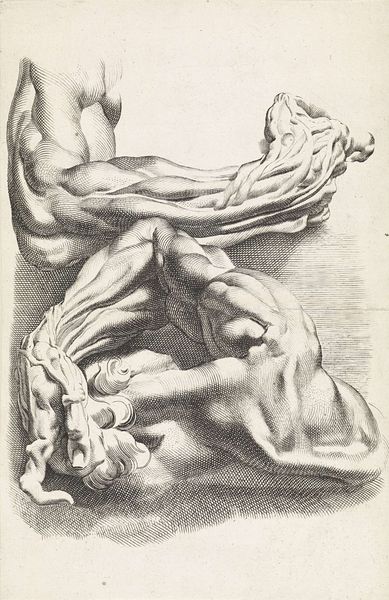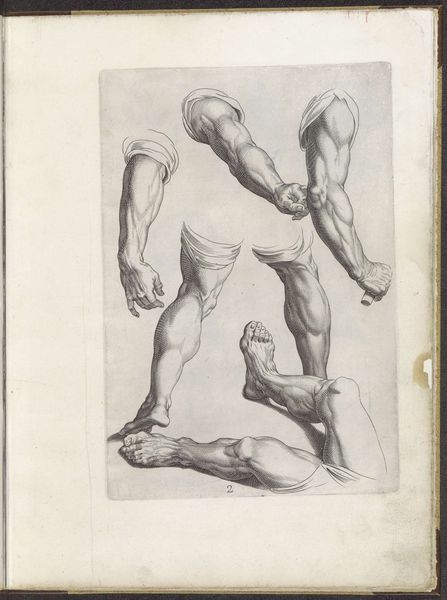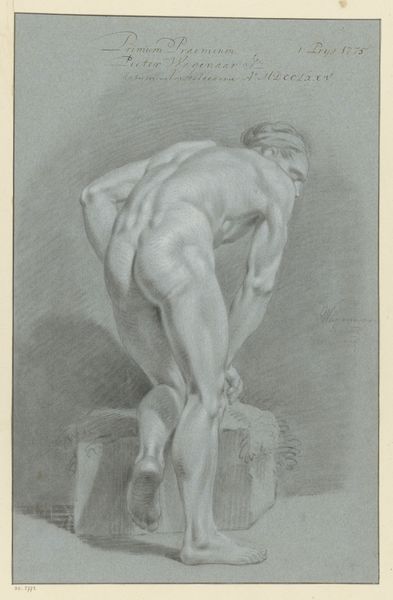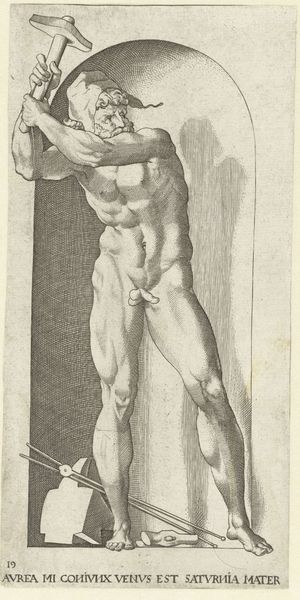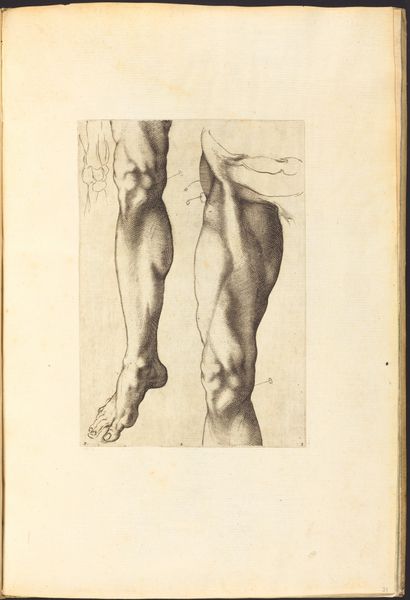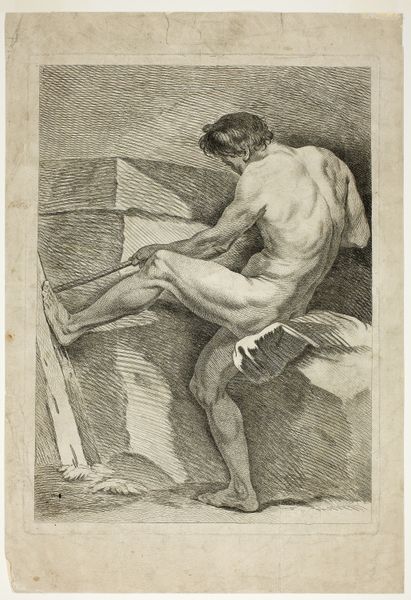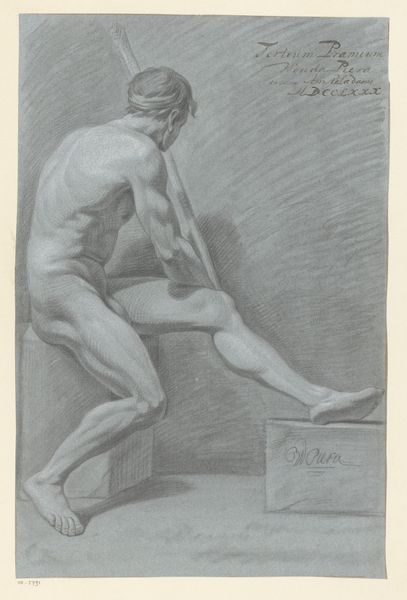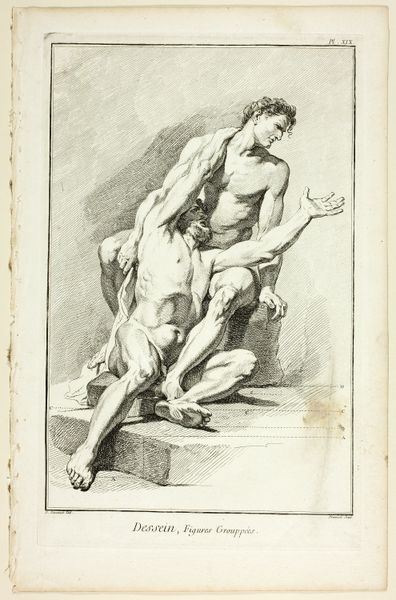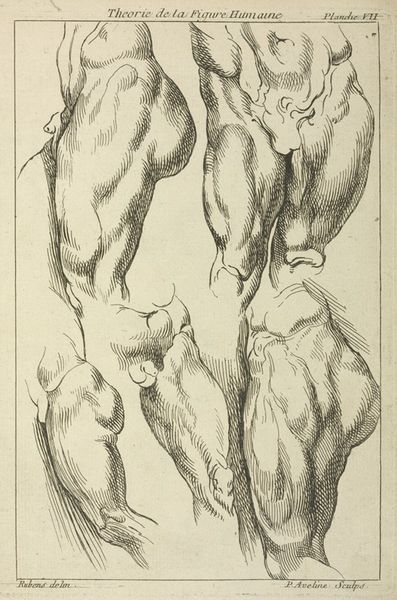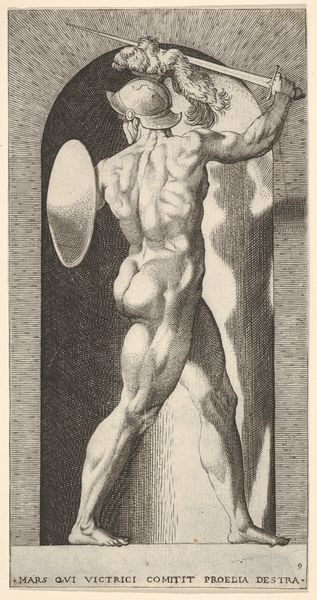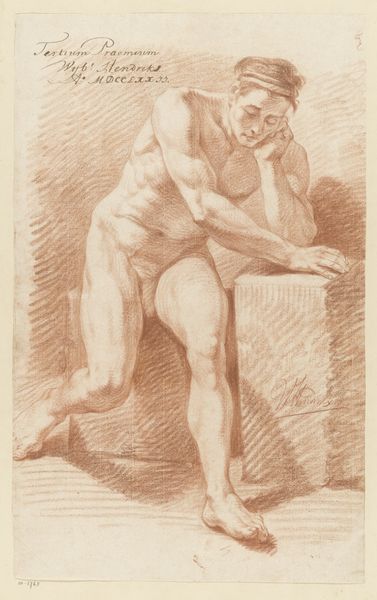
Design: Legs and Feet, from Encyclopédie 1762 - 1777
0:00
0:00
drawing, print, etching, paper, engraving
#
drawing
# print
#
etching
#
figuration
#
paper
#
line
#
academic-art
#
engraving
Dimensions: 323 × 205 mm (image); 350 × 220 mm (plate); 400 × 257 mm (sheet)
Copyright: Public Domain
Editor: This is "Design: Legs and Feet, from Encyclopédie" by Benoit Louis Prevost, dating from between 1762 and 1777. It’s an etching and engraving on paper. What strikes me most is the clinical precision, almost like a surgical illustration. How would you interpret this work? Curator: Consider the composition, primarily defined by line. The artist uses hatching and cross-hatching techniques to create a tonal range that suggests volume and depth. Note the varying densities, lending muscular definition and skeletal structure to the anatomical forms. Editor: I see that, particularly in the calves. The lines are so much denser there. Why focus solely on these aspects of the body? Curator: Precisely! These fragmented body parts eschew any narrative context, directing our attention toward pure form. Observe the artist's mastery in conveying textures, from the taut skin to the sinews. The intention appears to be anatomical study, achieved through refined technique, aiming to elevate the parts into an academic artistic exercise. Editor: So, the ‘what’ becomes secondary to the ‘how’? Curator: Exactly. We're invited to decode the visual syntax, celebrating the construction of the image itself, more than any symbolic meaning we could project onto it. The geometric underpinning adds a framework, focusing the form through rational assessment of what shape provides. Editor: That makes so much more sense now. Focusing on how the image is constructed using line and tone helps separate it from its potential subject matter and context. Curator: Precisely. Sometimes art is just…art. And that in itself contains something we may explore.
Comments
No comments
Be the first to comment and join the conversation on the ultimate creative platform.

